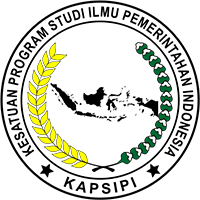Pembangunan Desa-Kota di Indonesia dari Perspektif Pengembangan Wilayah dan Migrasi
DOI:
https://doi.org/10.35967/jipn.v15i26.3854Keywords:
development, rural-city, region, migrationAbstract
The problem of rural-urban inequality can not be separated from the development paradigm that assumes that considered better urban and rural areas are higher or the subordination of urban areas. The problem is growing with the increasing levels of poverty in Indonesia, which was recorded by the BPS period March 2015 as much as 28.59 million (11.22% of the total population of Indonesia) in both urban (10.65 million) and rural (17.94 million soul). The poverty rate is increasing 860 thousand inhabitants of 27.73 million people in the period of September 2014, with details of the number of poor people in urban areas amounted to 10.36 million and 17.37 million rural people. This paper attempts to analyze the development of villages and cities in Indonesia from the perspective of regional development and migration. Strategy is needed in rural development the city is by adopting the concept of regional development and migration that it contains substances sustainable development of both macro and micro, so the construction of rural cities will be able to run well and in line with the Nawa Cita third Indonesian development of the region penggiran by strengthening areas and villages within the framework of the Unitary Republic of Indonesia.
Downloads
References
Chriataller, W, 1966. Central Palces in South Germany (terjemahan Baskin, W.W) Englewoods Cliffs. Prentice Hall, Inc. New Jersey.
Denney, H.,1972. Decongesting Metropolitan America: It Can Be Done. Extension Division, University of Missouri-Columbia. Colombia MO.
Douglass, M., 1998. A Regional Network Strategy for Reciprocal Rural-Urban Linkages: An Agenda for Policy Research with Reference to Indonesia, dalam Cecilia Tacoli, ed (2006), Rural-Urban Linkages (Earthscan), 124-154. Reprint from Thrid World Planning Review, Vol.20 No.1, 1998.
Harmandi, S.H.B dan Antarwati,E., 2015. Identifikasi Potensi Transmigran Berdasarkan Karakteristik Migran di Indonesia. Jurnal Ketransmigrasian Vol.31 No.2 Desember 2014.
Losch, A., 1964. The Nature of Economic Region, dalam Friedmann, J and Alonso W. (ed), Regional Development and Planning: A Reader. The MIT Press. Cambridge, Massachussets.
Perroux,F. 1964. Economic Space: Theory and Applications, dalam Friedmann, J and Alonso W. (ed), Regional Development and Planning: A Reader. The MIT Press. Cambridge, Massachussets.
Saleh, H.H.,2011. Mengurangi Benang Kusut Metropolitan: Bumi Nusantara untuk Manusia Indonesia. Rakyat Merdeka Books (RMBooks). Jakarta.
Saleh, H.H.,2015. Menjalin Desa-Kota: Upaya Membangun Indonesia dari Pinggiran. PT.Tempo Inti Media dan Kemendes. Jakarta.
Downloads
Published
How to Cite
Issue
Section
License
Copyright (c) 2016 Author(s)

This work is licensed under a Creative Commons Attribution-NonCommercial-ShareAlike 4.0 International License.





